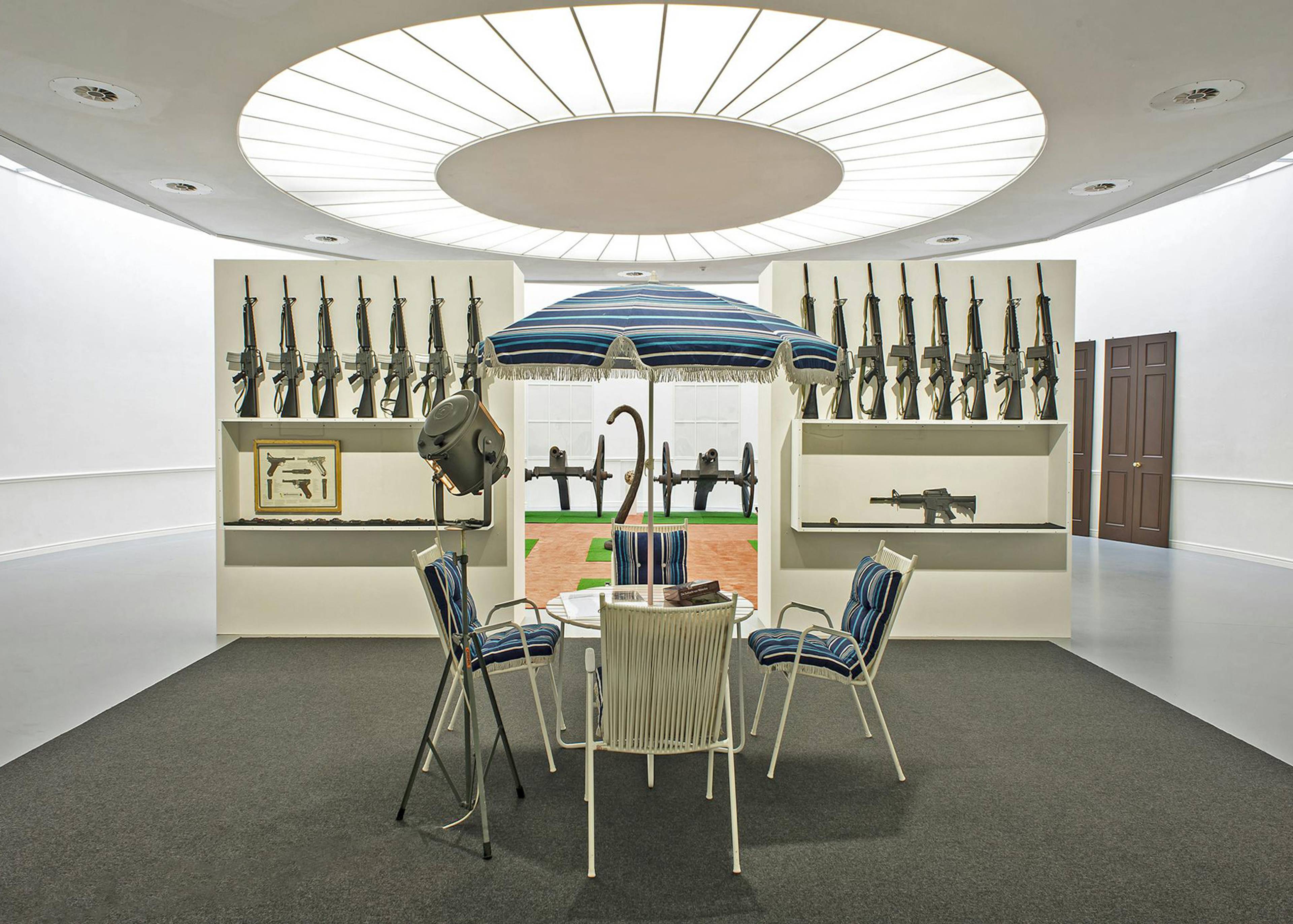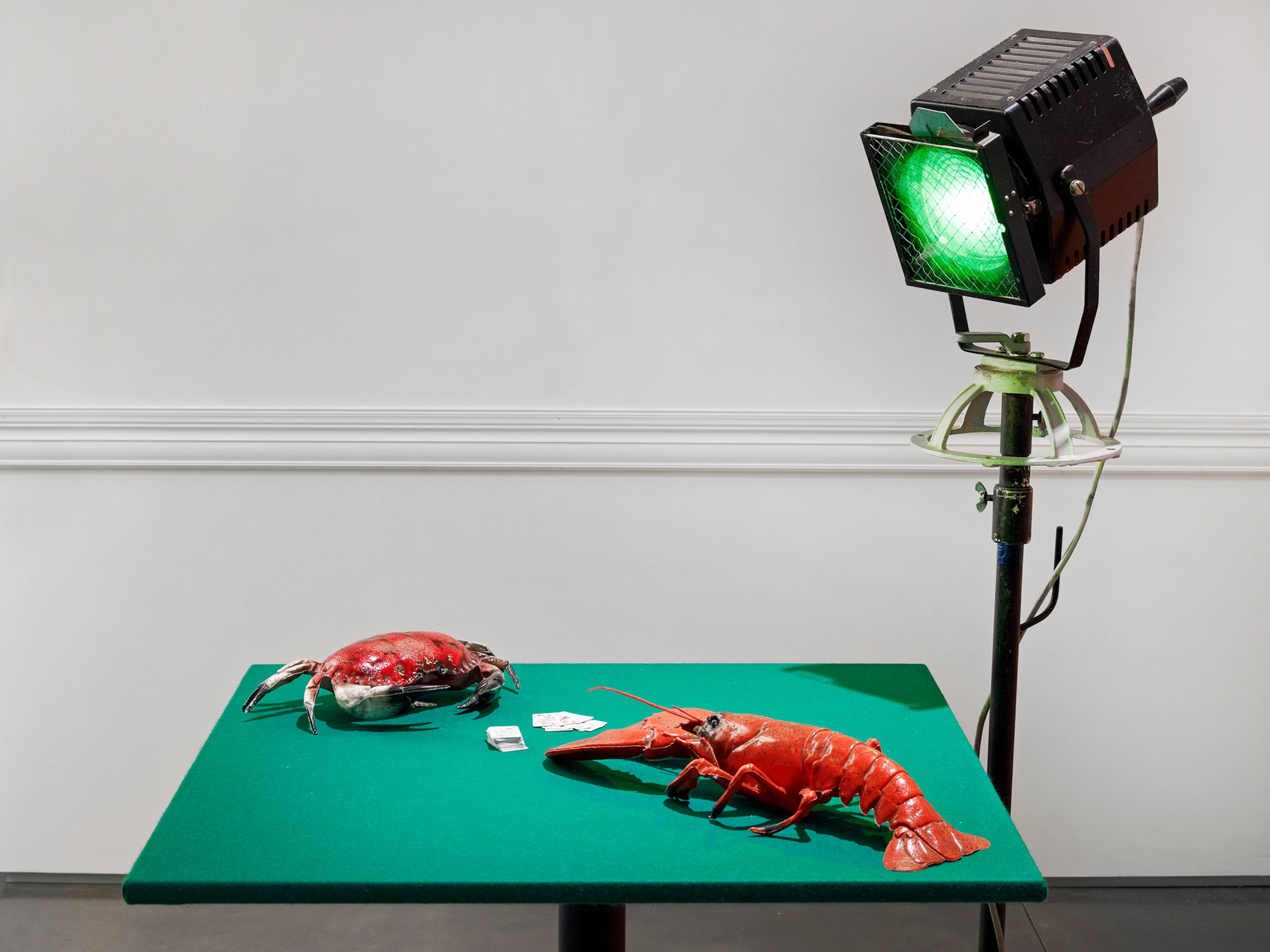On the outskirts of Vienna, there is a Roman Ruin in the grand gardens of Schloss Schönbrunn, a one-time summer residence of the House of Habsburg. Intrigued as soon as I saw it on the visitor’s map, I made the trek across the grounds. All of the classical elements were there: The marble looked authentic, in chunks of broken pediment and frieze; the layout and scale were spot on; it was even slightly submerged, covered by generational floods like the eternal city itself. But, after a minute, the whole thing began to seem almost too elaborate, too “put together” to be an actual ruin. The piles of marble looked staged. The faces on the roundels have an almost modern style.
The “Roman Ruin” turns out to be neither Roman nor a ruin. Rather, it is a folly, commissioned by one of many claimants to the seat of the Roman Empire. Completed in 1778, it was loosely modeled by Johann Ferdinand Hetzendorf von Hohenberg on the Roman temple of Vespasian and Titus, c. 87 AD. It’s typical of the ancient-ruin mania that swept Europe in the 1700s, following the first excavations of Pompeii and Herculaneum.
The Habsburgs knew it wasn’t real, but, as an immersive monument, it still did the trick in transporting aristocrats back to their forbears. A pristine replica would not have the same effect – decay was the whole point. They wanted to give the viewer the experience, not of being in Rome, but of being in a time when Rome had lapsed. As a ruin that was once brand new, its relationship to time was always spurious, its original intent to perform nostalgia to an audience insecure about the prospect of its own decline. The 18th-century viewer was drawn in by the conscious curiosity – to be contemporary then was to be able to produce such a melancholy effect.
The work itself is over 200 years old, almost ancient in its own right. Layered within the view from today, both civilizations – their norms, their technologies, their value systems, their lived concerns – have lapsed twice over. Within our own modern gaze, meanwhile, is a still more constructed view: In 2024, we’re looking at the past look at its past. Still, there is a residual draw – why else would I have seen tourists gawk as the aristocratic Viennese must have? Astonished, I walked back to the train station at the edge of the Schlosspark and tried to make sense of my feelings. There was something eerily familiar about the whole affair.
Like Schönbrunn’s folly, some among us sense that the broken columns and tattered scenes are arranged just a little too neatly.
Suddenly, it hit me. Every other show I see in New York, not to mention the images and reports I get from any number of far-flung biennials, reminds me of the Roman Ruin. The majority of new art today feels moribund, directionless, confined to feeble, circular posturing. I’m thinking about the general ennui we experience when, at large surveys of so-called new art, we feel that the historical period of contemporary art has reached its conceptual terminus; that, run out of new conceits, it instead simply remixes old forms, rhetorics, and themes. No institution or artist in particular is more guilty of this than the rest; but society has moved on to new battles, and contemporary art feels stuck replaying old ones.
Art doesn’t need to respond to every political crisis, and it definitely doesn’t need to solve them. Art doesn’t need to be a coherent expression at all – it’s possible to be powerful in oblique ways, situating the viewer in a new arrangement. Art’s “contemporaneity,” if it still has any purchase on the present, hinges on this ability to effect variation. Yet, institutions and certain complicit artists are in crisis, and the median crisis response has been to self-satisfactorily rehash old strategies, while failing to test the limits of the present. The most important things I read in art magazines these days are the obituaries; simply viewing art made in the recent past has come to feel conspicuously like strolling through a post-modernist collection.
Like Schönbrunn’s folly, some among us sense that the broken columns and tattered scenes are arranged just a little too neatly. Worse yet, like those 18th-century viewers who always knew the Roman Ruin’s falseness, we pretend not to care about contemporary art’s exhausted formal hijinks and bland historical conceits. Layered over nearly any physical or visual assemblage, merely a brief art-speak incantation will suffice to vest it with nowness. Provided the political context is “urgent” or “transformative” and engages “identity” or “multifarious crises,” any juxtaposition, blurring of boundaries, or sixty-year-old formal quirk can still momentarily dazzle. But the very essence of such gestures is melancholy, performed in the ritual of ruin contemplation.
Marcel Broodthaers, Décor: A Conquest by Marcel Broodthaers, XIXth Century, 1975/2014. Installation views, Aspen Art Museum, 2014. Photos: Tony Prikryl
This is how, two years in and two years out, the Whitney Biennial in New York seems not to benchmark what’s happening in US-American art, but to represent clever manipulations of form recognizable to an ever shrinking coterie of specialists – an in-crowd nodding along to the steady checking of socio-political boxes, under no threat of having their sensibilities transgressed. Apparently on auto-pilot, the main thing keeping people coming back to these dwindling echo chambers is some deep sense that, if we stop caring, the whole thing will just disappear.
Equally puzzling is how so much of today’s art, mired in internecine, academic rituals, remains insulated against the possibility that its power has waned. The influence of contemporary art was once held in its relation to formal and political debates alike. But now, many of those debates have shifted focus, and contemporary art has stayed in place, a tread-milling recalcitrance that, seen from the US, begins to resemble an altogether more pernicious kind of nostalgia: reenactments of the Civil War.
Such theatrics are a rapidly growing enterprise. In open fields all around the country, grown men and women assemble in period dress to act out famous historical battles with excruciating specificity, attended – like actual Civil War battles – by crowds of picnicking viewers. But, where advocates say they’re about historical preservation, their critics call them acts of revanchism, having taken off after the protest movement Black Lives Matter persuaded municipalities across the South to remove Confederate monuments in droves.
Today, participation in Civil War Reenactments is no doubt a deliberate provocation. More than just nostalgic, these men perform an identity that they feel is under threat. It’s a not-so-subtle statement about the way things once were – a chance, even in cosplaying defeat, to avenge a wrong turn taken by history. Ridiculous? Perhaps. Racist? Almost certainly. But much different from many of the kinds of re-enactments I see all around contemporary art? Not so much.
Borders are exhausted from being blended, our identities worn out by interrogation, modes of resistance drained by meaningless repetition.
Look a little closer, and it’s all around us. Our “reenactments” are a bit more cerebral, re-staging the aesthetic debates of late modernism, the institutional struggles of the 1960s, or the philosophical crises of the 70s and 80s. But the means towards an as yet unrealized victory are no less frivolous: perhaps the entire project of colonialism, institutional racism, and patriarchy will surrender to a slight readjustment of wall texts or the “interrogation” of a new identity at the most exquisitely curated group show?
While the causes may be new, the formats feel dated and deficient, or, worse, theatrical. The ubiquity of overtly activist themes in exhibition-making – Adriano Pedrosa’s Venice Biennale main exhibition “Foreigners Everywhere” being one recent example – is welcome. However, such continuous institutional intervention comes to resemble more a conversation with curators past than the thousands of migrants being coerced into society’s shadows, deported, or murdered in transit. What is self-referentially known as “the curatorial” is a discourse of futility: Borders are exhausted from being blended, our identities worn out by interrogation, modes of resistance drained by meaningless repetition. The war inside the institutions is over. But some still put on the regalia, year after year, and fight with the ghosts.
This is not to say that contemporary artists generally are shying away from engaging today’s political challenges – climate change, widespread digital surveillance, and racial and class inequities are issues that will long be fertile ground for art and its discourse – but that our institutions are playing a different game. Their audiences are not any kind of public that might act on an issue, for, as long as the viewer sees their own self-satisfaction reflected back at them, the game is already won. Instead of encouraging new avenues towards relevance, institutions reward a new kind of academicism whose only inventions are different forms of nostalgia: one drawing on the decline of a great civilization whose cultural signifiers live on in tattered, pseudo-heroic friezes that require a PhD to decipher; the other arousing the seething passions of a group who thinks there’s still some point to rolling out the cannons and taking up historical battle formations. It’s a kind of ouroboros that I barely twisted out of that sunny day in the Schlosspark. The more I look around, the harder it is to escape.
___



